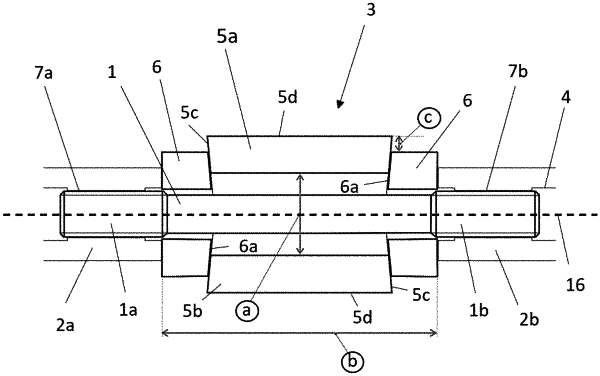| CPC B23P 19/067 (2013.01) [B25B 29/02 (2013.01); F16B 31/043 (2013.01)] | 21 Claims |

|
1. An apparatus for tensioning a bolt that joins a first part and a second part, the bolt including a first threaded end threaded with a first threaded insert of the first part and a second threaded end threaded with a second threaded insert of the second part, the bolt having a longitudinal axis, the apparatus comprising:
a first wedge located on a first side of the longitudinal axis of the bolt, the first wedge having at least one side surface slanting in a first direction along the longitudinal axis;
a second wedge located on a second side of the longitudinal axis of the bolt, the second wedge having at least one side surface slanting in a second direction along the longitudinal axis, the first and second wedges being separated by a first distance, the apparatus being configured such that as the first distance is reduced, a second distance between the first and second parts increases;
at least first and second clamping elements that are each configured to act on the first and second wedges to cause the first and second wedge each to slide along the respective slanting side surface to be moved nearer one another to decrease the first distance; and
a tensioning tool that is configured to act on the first and second clamping elements to cause a force to be applied to at least one of the first and second wedges to cause a decrease in the first distance to move the first and second wedges nearer one another and to increase the second distance, the tensioning tool being configured to control the application of the force to the at least one of the first and second wedges based on a measured value of one or both of the first and second distances.
|